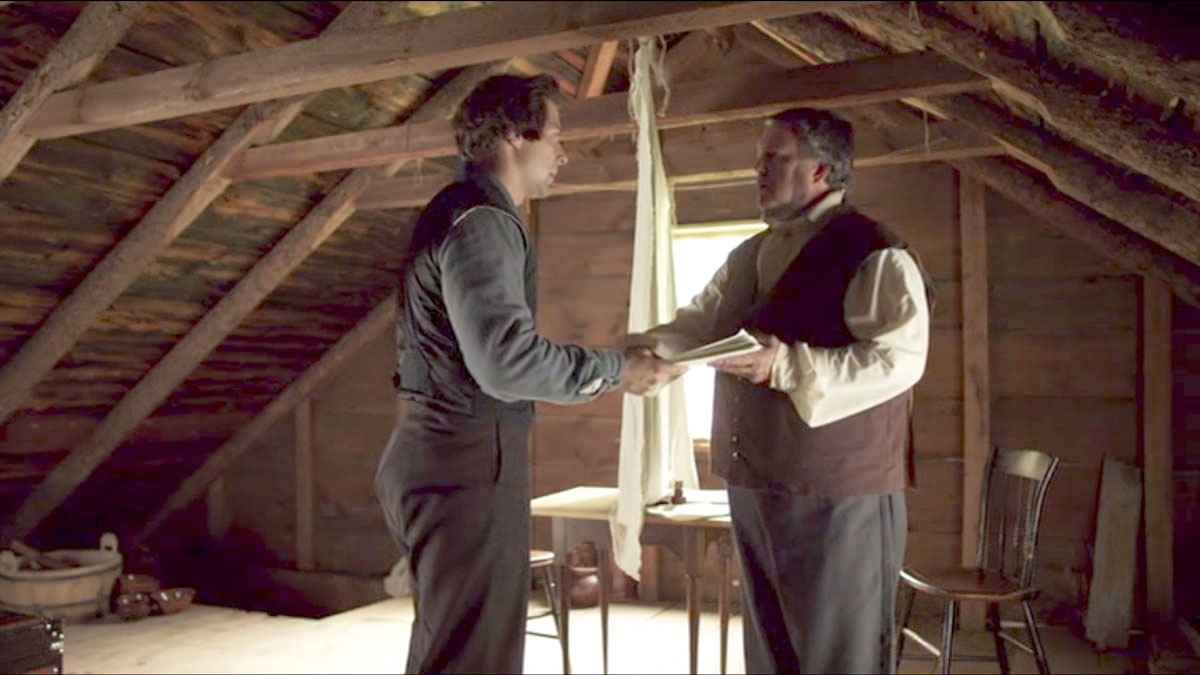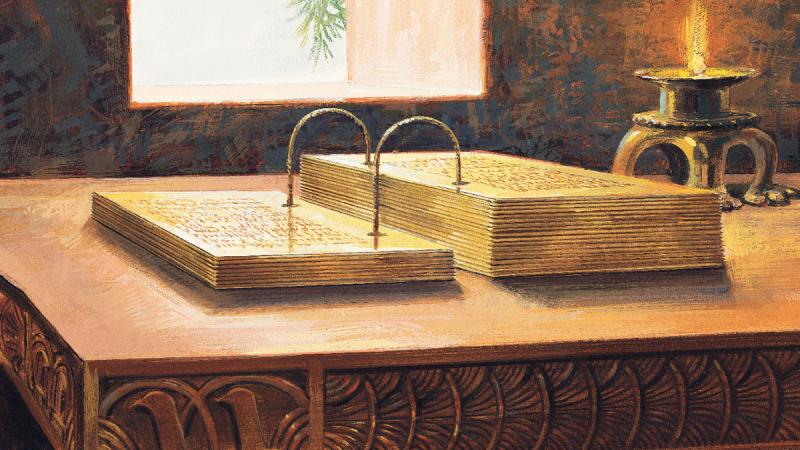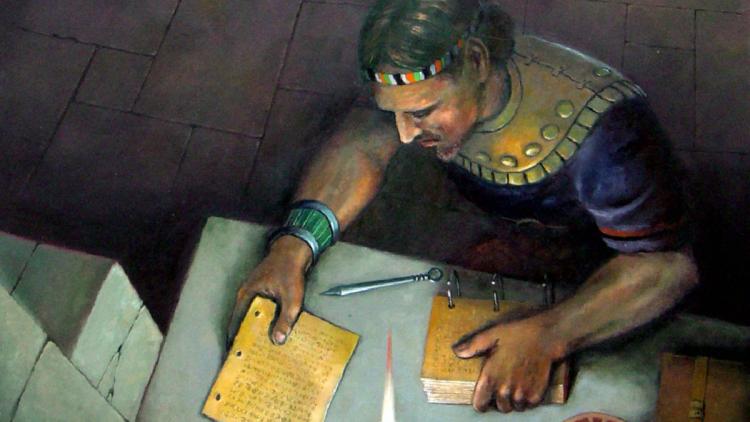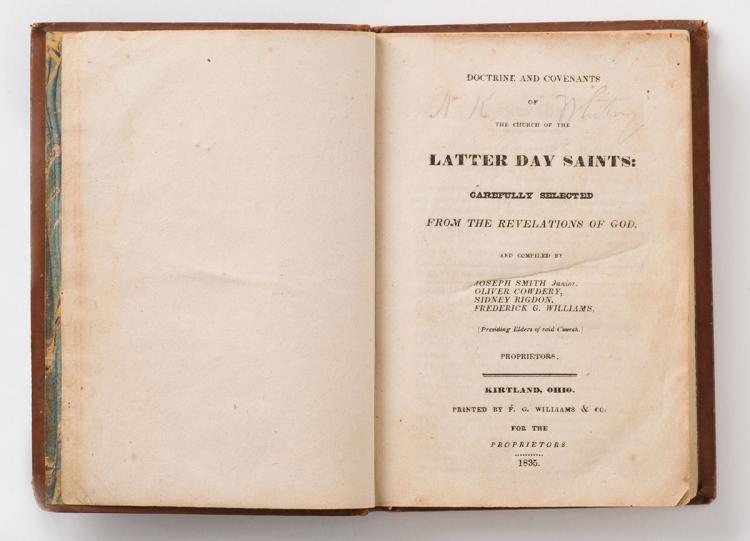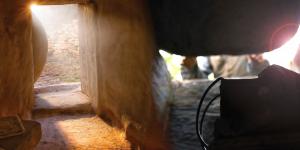You are here
What Was on the Lost 116 Pages?

1 Nephi 9:5
The Know
In the summer of 1828, Joseph Smith let Martin Harris borrow the first 116 pages of the Book of Mormon’s English translation. Through negligence and disobedience, Harris subsequently lost the manuscript, and its contents have never been recovered.1 When explaining this situation in the preface to the 1830 edition of the Book of Mormon, Joseph Smith said that the lost manuscript contained the Book of Lehi.2
Due to the fame of this story, and its significant role in reshaping the structure and content of the Book of Mormon,3 readers may naturally wonder what the Book of Lehi was all about. Drawing upon several lines of evidence, scholars have been able to reconstruct a number of topics, themes, and even direct statements that most likely were part of Lehi’s original record or Mormon’s abridgment of it.4
Clues from the Small Plates
Concerning the small plates (1 Nephi through Omni) Nephi explained, “Wherefore, the Lord hath commanded me to make these plates for a wise purpose in him, which purpose I know not” (1 Nephi 9:5). Today, the purpose for the Lord’s commandment to Nephi has become clear. The small plates help directly compensate for the lost 116 pages, and they provide the Book of Mormon with a much-needed, spiritually focused introduction.5
On several occasions, Nephi stated that he was giving a shortened account of his father’s writings.6 This means that we surely have at least some portions of the Book of Lehi preserved in Nephi’s writings. S. Kent Brown, for instance, has suggested that Nephi’s account of his father’s opening vision (1 Nephi 1:4–15) was likely taken directly from the introduction of Lehi’s record.7 Many more instances could be cited.8 As explained by Don Bradley, the story in the small plates “recapitulates in broad strokes the story of the first four and a half centuries of Nephite narrative that had been given in detail in the Book of Lehi.”9
Clues from Mormon’s Abridgment
Mormon was a careful editor and abridger, and most of the time he only made references to content that he knew his readers would be familiar with. So one way to find things that were likely on the 116 pages is to look at Mormon’s abridgment and identify perplexing references to unfamiliar past content. These include lost stories like the account of Aminadi (Alma 10:2) and additional details about what happened in Lehi’s wilderness journeys, as is found in Alma 37:38–42. They also include statements from Lehi that aren’t found in the small plates (see Alma 50:19–20).10
Clues from the Doctrine and Covenants
Surprisingly, the Doctrine and Covenants also contains information that may help fill in some gaps about the Book of Lehi. For instance, D&C 3:17-18 mentions the seven tribes of Lehi: Nephites, Jacobites, Josephites, Zoramites, Lamanites, Lemuelites, and Ishmaelites. These same tribes show up in this same order on three occasions in the Book of Mormon.11 Their presence in this revelation, dictated soon after Martin Harris lost the manuscript, suggests that these tribes were probably an important piece of information from the Book of Lehi. Doctrine and Covenants 5 and 10 were also dictated before the translation of the plates resumed and may likewise contain valuable information.12
Clues from Historical Documents
Perhaps the most intriguing line of evidence comes from 19th century historical documents, especially from an interview recorded by Fayette Lapham. Lapham never became a Latter-day Saint,13 but he did record a discussion he had with Joseph Smith, Sr. in 1830. Much of the content in Lapham’s report is clearly garbled. Yet, through careful analysis, Don Bradley has persuasively argued that Lapham’s report does indeed contain several authentic details about the Book of Lehi.
These include (1) a story about Lehi building a tabernacle in the wilderness, (2) a wilderness journey, guided by the Liahona, that seems to have taken place in the New World, (3) the discovery of an artifact that can be reasonably identified as the Nephite interpreters, (4) an encounter with the Lord at a veil, (5) and a report of when the Liahona stopped working. These details are all fascinating because in one way or another Bradley has shown how they help explain perplexing content or fill in missing information about known Book of Mormon stories.14
The Why
Until the lost 116 pages are found or the Lord reveals their contents, we will never be sure exactly what was on them. Yet a careful analysis of the available evidence offers intriguing, and in some cases, very likely possibilities about what they contained. This information, while not essential, can help us answer questions about Book of Mormon passages that may otherwise seem confusing or irrelevant.
The story of the lost manuscript also demonstrates that God can compensate for the human weaknesses of his servants. Centuries before Martin Harris lost the 116 pages, God inspired the prophet Nephi to make a record which would ideally serve as a replacement introduction to the Book of Mormon. As the Lord explained to Joseph Smith, “The works, and the designs, and the purposes of God cannot be frustrated, neither can they come to naught. … Remember, remember that it is not the work of God that is frustrated, but the work of men” (D&C 3:1, 2).
Furthermore, the story of the lost 116 pages can also help us trust that God is still accomplishing his designs through living prophets today, whatever weaknesses or ailments they may have. For instance, concerning the health challenges that sometimes accompany the advanced ages of modern apostles, Elder David A. Bednar has taught, “The Lord’s revealed pattern of governance by councils in His Church provides for and attenuates the impact of human frailties. Interestingly, the mortal limitations of these men actually affirm the divine source of the revelations that come to and through them.”15
Whatever challenges or setbacks we may suffer in our personal lives, we can similarly trust that the Lord can compensate for our weaknesses and limitations. Sometimes, like Joseph Smith and Martin Harris, we may feel that “all is lost.”16 Yet through the infinite power of Christ’s Atonement, all that seems lost can be ultimately and miraculously restored.
Further Reading
Don Bradley, The Lost 116 Pages: Reconstructing the Book of Mormon’s Missing Stories (Salt Lake City, UT: Greg Kofford Books, 2019).
Don Bradley, “American Proto-Zionism and the ‘Book of Lehi’: Recontextualizing the Rise of Mormonism,” (M.A. Thesis, Utah State University, 2018).
John A. Tvedtnes, “Contents of the 116 Lost Pages and the Large Plates,” in The Most Correct Book: Insights from a Book of Mormon Scholar (Salt Lake City, UT: Cornerstone Publishing, 1999), 37–52.
S. Kent Brown, “Recovering the Missing Record of Lehi,” in From Jerusalem to Zarahemla: Literary and Historical Studies of the Book of Mormon (Provo, UT: Religious Studies Center, Brigham Young University, 1998), 28–54.
S. Kent Brown, “Nephi’s Use of Lehi’s Record,” in Rediscovering the Book of Mormon: Insights You May Have Missed Before, ed. John L. Sorenson and Melvin J. Thorne (Salt Lake City and Provo, UT: Deseret Book and FARMS, 1991), 3–14.
- 1. See William J. Critchlow, Jr., “Manuscript, Lost 116 Pages,” Encyclopedia of Mormonism, 4 vols., ed. Daniel H. Ludlow (New York, NY: Macmillan, 1992), 2:854–855.
- 2. See “Book of Mormon, 1830,” p. [iii], online at josephsmithpapers.org.
- 3. After the loss of the 116 pages, Joseph Smith’s divine gift to translate was temporarily suspended. In a revelation, he was told to not attempt to retranslate the missing pages because wicked men with the stolen copy would seek to undermine the credibility of the work (see D&C 10). Instead, when the translation resumed in April of 1829, the translators just picked up where the translation had previously had left off, near the beginning of the Book of Mosiah. Evidence indicates that, contrary to most readers’ expectations, Nephi’s small plates (1 Nephi through Omni) were most likely translated after the abridgments and personal writings of Mormon and Moroni. When the Book of Mormon was being prepared for publication, it was rearranged in the order that we know it today, with the translation of the small plates at the beginning, followed by Words of Mormon and then Mosiah. See John W. Welch, “The Miraculous Timing of the Translation of the Book of Mormon,” in Opening the Heavens: Accounts of Divine Manifestations, 1820–1844, ed. John W. Welch, 2nd edition (Salt Lake City and Provo, UT: Deseret Book and BYU Press, 2017), 98–103, 121–125.
- 4. The following summary is largely adapted from Don Bradley, “American Proto-Zionism and the ‘Book of Lehi’: Recontextualizing the Rise of Mormonism,” (M.A. Thesis, Utah State University, 2018), 28–30.
- 5. Elder Kim B. Clark has explained, “Without Lehi’s record [which was lost with the 116 pages], there would be no account of Lehi’s family, the journey to the promised land, or the origin of the Nephites and Lamanites. In May of 1829 the Lord revealed to Joseph a plan, centuries in the making, to replace the book of Lehi with what we now know as the small plates of Nephi.” Kim B. Clark, “Thou Art Joseph,” Worldwide Devotional for Young Adults, May 7, 2017, online at lds.org.
- 6. See 1 Nephi 1:16; 6:3; 9:2.
- 7. S. Kent Brown, “Recovering the Missing Record of Lehi,” in From Jerusalem to Zarahemla: Literary and Historical Studies of the Book of Mormon (Provo, UT: Religious Studies Center, Brigham Young University, 1998), 30.
- 8. See Brown, “Recovering the Missing Record of Lehi,” 28–54; S. Kent Brown, “Nephi’s Use of Lehi’s Record,” in Rediscovering the Book of Mormon: Insights You May Have Missed Before, ed. John L. Sorenson and Melvin J. Thorne (Salt Lake City and Provo, UT: Deseret Book and FARMS, 1991), 3–14.
- 9. Bradley, “American Proto-Zionism and the ‘Book of Lehi’,” 28–29.
- 10. See John A. Tvedtnes, “Contents of the 116 Lost Pages and the Large Plates,” in The Most Correct Book: Insights from a Book of Mormon Scholar (Salt Lake City, UT: Cornerstone Publishing, 1999), 38–40.
- 11. See Book of Mormon Central, “Why Did Lehi Divide His People into Seven Tribes? (Jacob 1:13),” KnoWhy 319 (May 29, 2017).
- 12. See Bradley, “American Proto-Zionism and the ‘Book of Lehi’,” 29.
- 13. See Bradley, “American Proto-Zionism and the ‘Book of Lehi’,” 124.
- 14. See Bradley, “American Proto-Zionism and the ‘Book of Lehi’,” 120–159.
- 15. David A. Bednar, “‘Chosen to Bear Testimony of My Name’,” Ensign, November 2015, online at lds.org.
- 16. See “Lucy Mack Smith, History, 1844–1845,” p. [6], bk. 7, online at josephsmithpapers.org.
KnoWhy Citation
Related KnoWhys
Subscribe
Get the latest updates on Book of Mormon topics and research for free

